SaniPath Takeaways from 2015 and Hopes for the New Year
This past year has been full of valuable meetings and conferences for the SaniPath team and we have been able to both collect more data from our tool as well as begin to publish results. We have outlined some of the highlights.
1. We attended and presented in exciting Sanitation Conferences around the World
Suraja Raj was able to kick off 2015 by representing SaniPath at the Fecal Sludge Management (FSM3) conference in Hanoi, Vietnam in January. She presented on the SaniPath Tool and how it can impact urban sanitation. SaniPath team members Christine Moe, Eddy Perez, Suraja Raj, and David Berendes collaborated with World Bank’s Water and Sanitation Program (WSP), and the German Society for International Cooperation (Gesellschaft für Internationale Zusammenarbeit or GIZ) to lead a workshop at FSM3 that focused on the use of diagnostic tools to assess fecal sludge management at a city-wide scale.
The SaniPath team also shared our work at the University of North Carolina 2015 Water and Health conference in November. Highlights from this conference include Kate Robb and Suraja Raj’s presentation on the SaniPath deployment in Maputo. This was particularly exciting as it was our first chance to share those results and receive feedback on our work in Maputo. Other speakers at this event include David Berendes who presented on different spatial and behavioral influences leading to fecal contamination in households. He discussed the relationship between the location of a toilet and the extent of contamination of various surfaces in a household and the hands of children and adults. David also presented a poster highlighting the effects of neighborhood structures and household behaviors on risk of exposure to fecal contamination in urban flood areas. Kate Robb also had a poster “Characterizing Determinants of Hand Contamination Across Public and Private Domains in Low-Income Neighborhoods of Accra, Ghana.”
Other conferences include the Water, Sanitation and Hygiene Services and Beyond 2015 conference in Loughborough University in the UK. David Berendes presented on spatial and behavioral influences on household fecal contamination in India at this conference. Kate Robb also traveled to Stockholm World Water week in August to present about the SaniPath Tool during the SUSANA side.
2. SaniPath expanded to Maputo, Mozambique
The third pilot of the SaniPath Tool took place in Maputo, Mozambique in collaboration with the MapSan study lead by Joe Brown at the Georgia Institute of Technology, The NGO, Water and Sanitation for the Urban Poor (WSUP) is installing a sanitation intervention targeting compound-level sanitation. The SaniPath team is using the tool to measure exposure to fecal contamination before and after the sanitation intervention in 15 intervention compounds and 10 control compounds in low-income areas of Maputo. The SaniPath Team aims to determine if the improved shared latrines could reduce exposure to fecal contamination. The pilot will also allow the team to understand if the SaniPath Tool is useful for monitoring and evaluation of sanitation interventions. Pre-intervention data were collected from March to April of this year, toward the end of Mozambique’s rainy season. The pre-intervention results show that the highest exposure for children and adults is from shared latrines. The team is excited to conduct post-intervention data collection in March 2016 followed by a comparison analysis of the pre and post data in the summer of 2016.
3. Advisory Committee Meeting
In November of 2015, Emory University invited a distinguished group of WASH experts to join an Advisory Committee meeting held to help the team improve the SaniPath Tool. Input was sought on how the results from the studies could be most effectively used to impact those living in low-income urban areas through investments in urban sanitation, policies, and programs. Over the two-day meeting, we enjoyed hearing more about the work of these frontrunners in urban sanitation and received excellent advice that we will implement in the coming year.
A more in depth summary of the advice and summary from the meeting can be found here
4. Supplemental Funding for SaniPath from Bill & Melinda Gates Foundation
The Bill & Melinda Gates Foundation have approved our request for additional funding. The grant will help the team answer three main research questions that will further enable the success of the SaniPath Tool.
- What information regarding public health risk is useful for decision makers?
- Given the need for urban sanitation investments and policy to consider, can the SaniPath Rapid Assessment Tool encourage better sanitation investments or policy?
- Can sustained uptake of the SaniPath Rapid Assessment Tool be achieved through improved training and demand generation?
The diagram below was created to illustrate how SaniPath will be able to effectively answer these questions. By spending the time to fully understand the clients’ problem, SaniPath can improve and evaluate the tool. Also, by holding stakeholder meetings, SaniPath can help generate demand for the tool and work to build capacity for target users. Proper deployment of the tool will result in a sustainable use of the tool and the results it provides will positively influence sanitation investment and policies.
5. Three Peer- Reviewed Publications were Accepted by Academic Journals
Over the last year, we had three peer-reviewed publications be accepted by academic journals. Dorothy Peprah authored a publication about the quality and accessibility public toilets in Accra and the availability of pay-per-use toilets. Another publication, by Stephanie Gretsch explores open drains in Accra and looks at the variety of doses of fecal pathogens in different drains around the city. The third, written by Peter Teunis, utilizes household and nursery structured observation data of children under five to estimate hazard rates for each state (i.e. combination of behavior and location) and simulated behavior sequences of children in low-income urban neighborhoods in Accra, Ghana. It helps us understand the behaviors that expose children to fecal contamination.
Click here for more information about the Accra paper
Looking ahead…
The SaniPath team is looking forward to an even better 2016. Along with the three research questions mentioned above, we have plans to return to Maputo and hope to extend our work to other potential field sites in Bangladesh, Senegal, and India. The SaniPath Team is also planning to launch an improved version of the SaniPath Tool that will improve its effectiveness and simplify its use. The additional funding will allow the SaniPath team and users to further add to the public health evidence- base and ensure the SaniPath Tool can sustainably improve sanitation investments and policies.



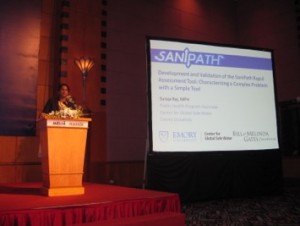
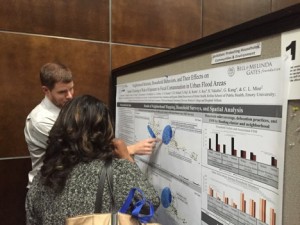
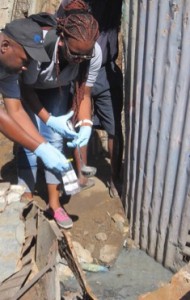
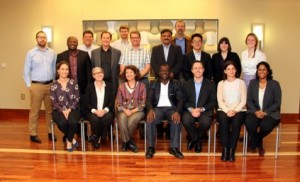
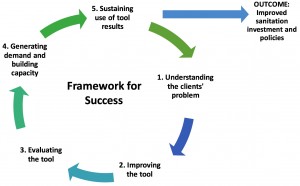
Sorry, the comment form is closed at this time.